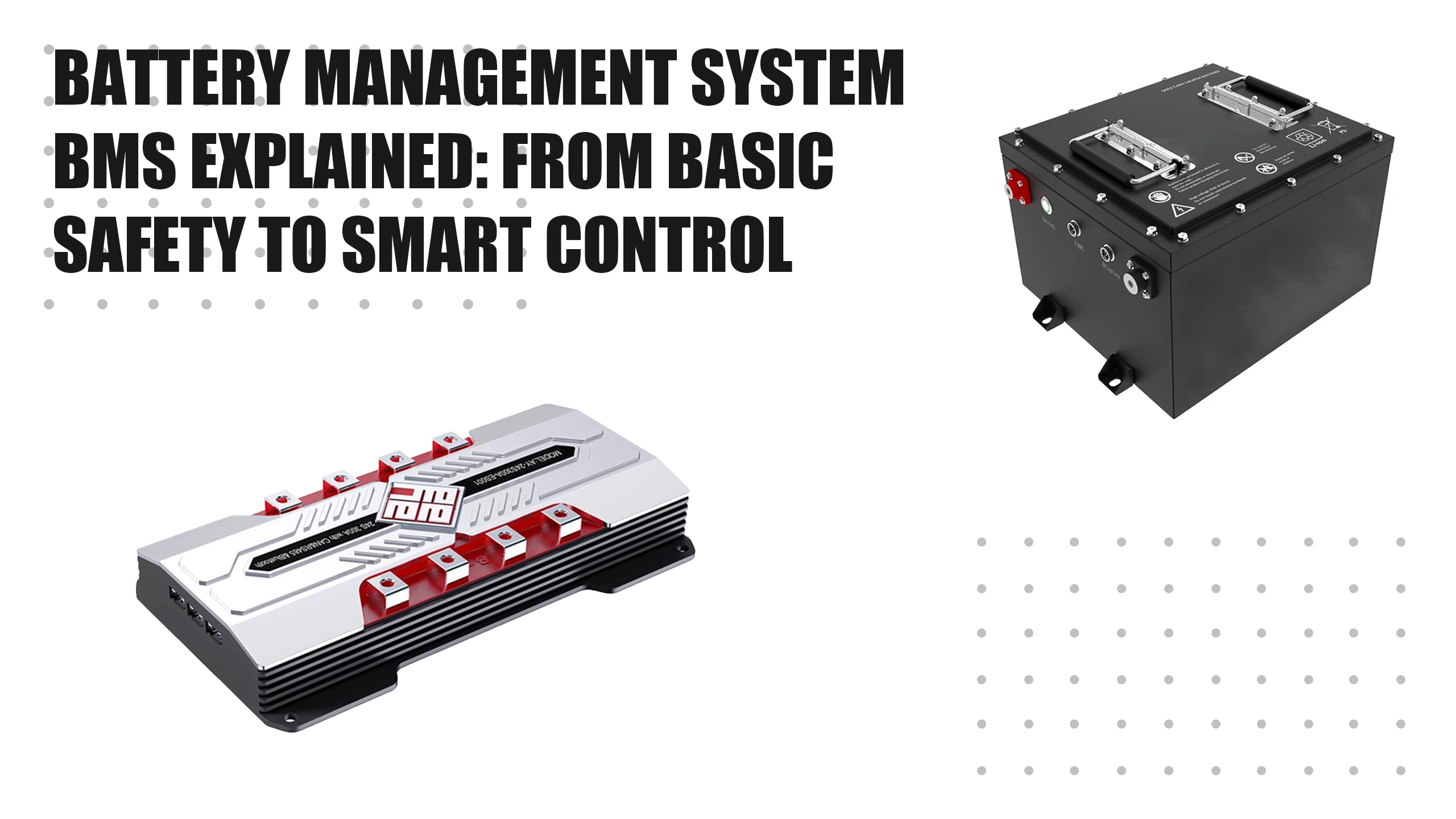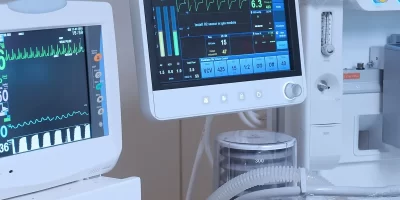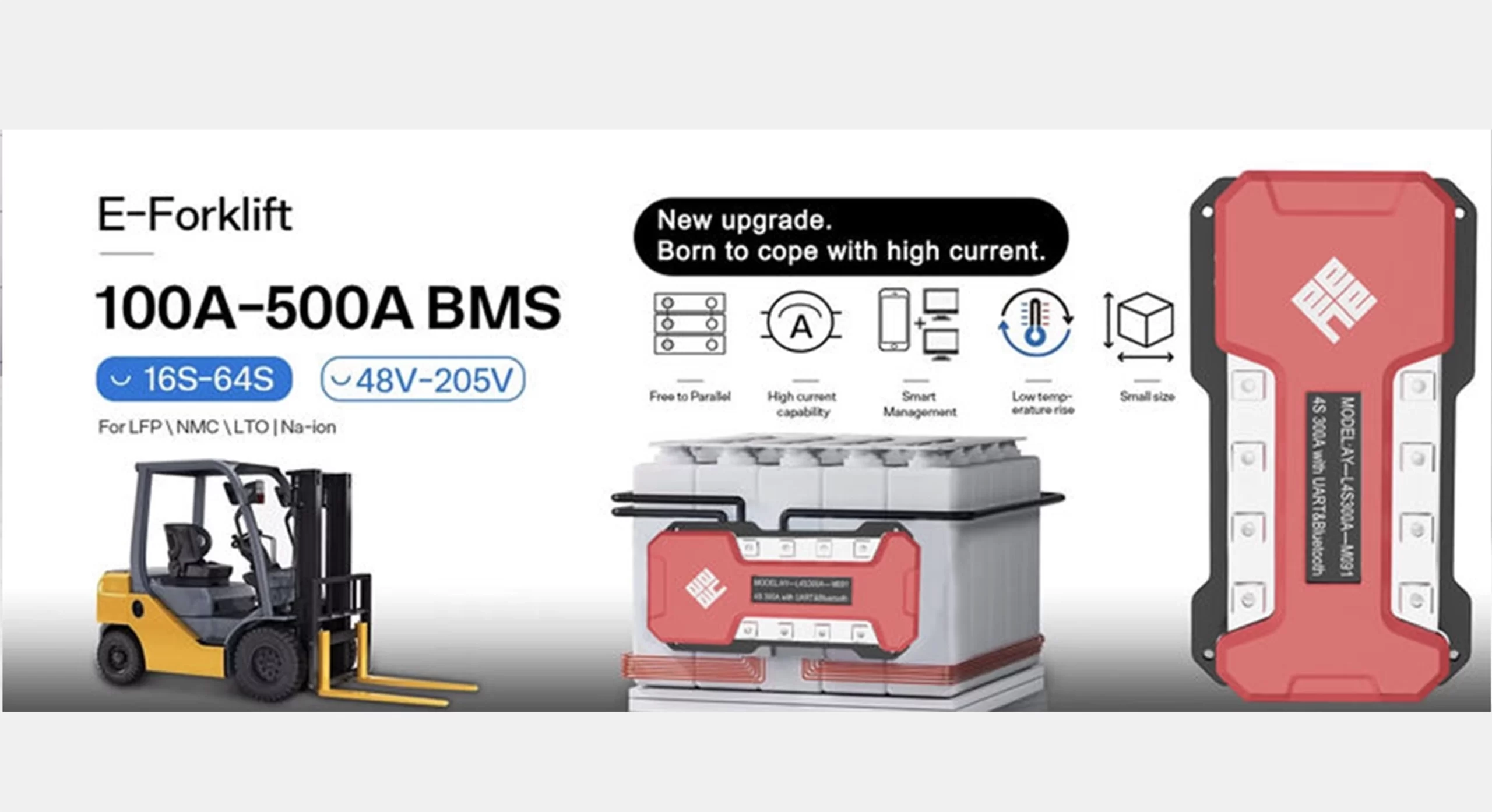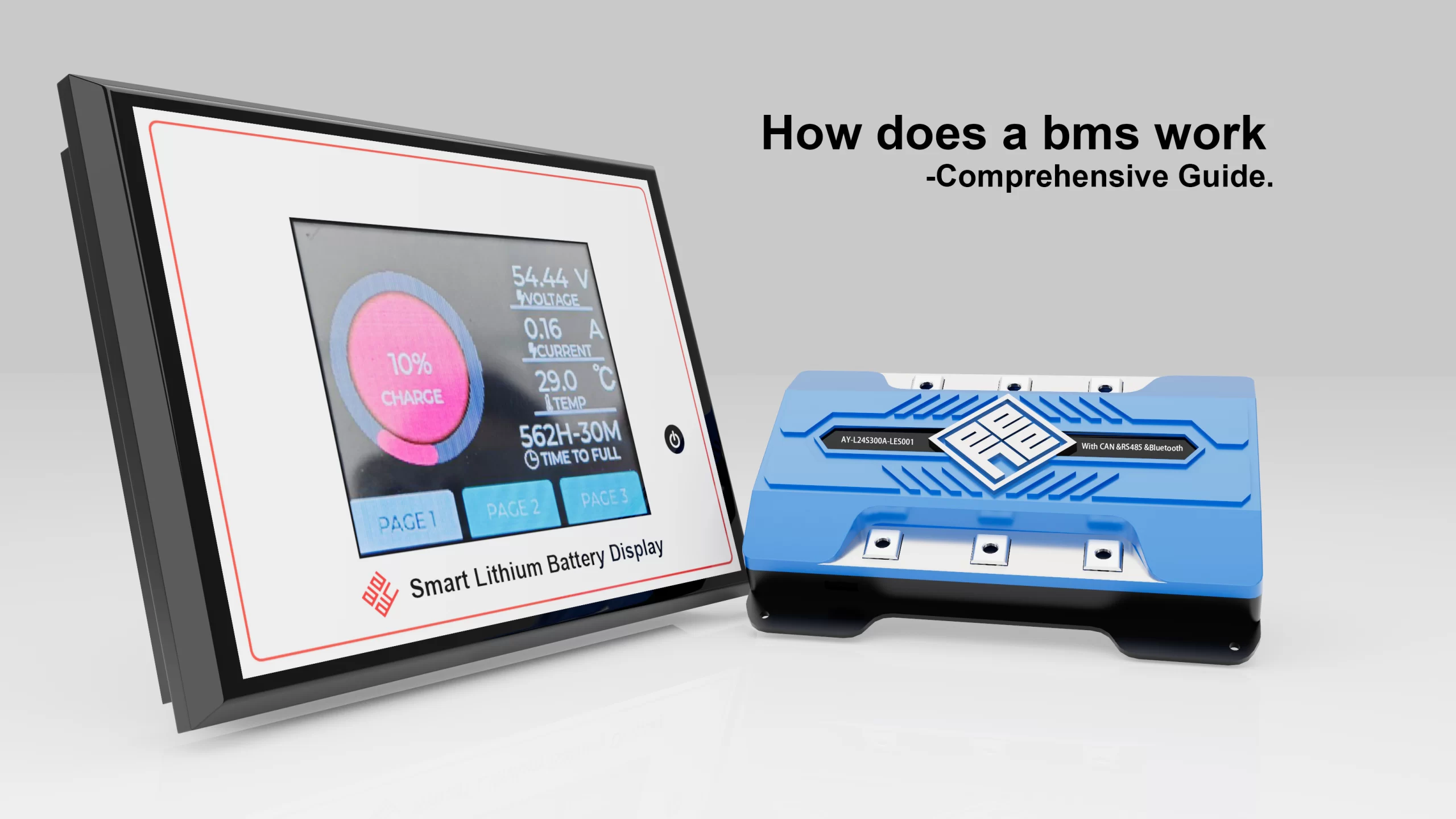Home About Us EVENTS & NEWS Battery Management System BMS Explained: From Basic Safety to Smart Control
Battery Management System BMS Explained: From Basic Safety to Smart Control
Battery Management System BMS Explained: From Basic Safety to Smart Control
In today’s rapidly evolving energy landscape, the battery management system BMS has emerged as a cornerstone technology across a wide range of industries. From electric vehicles (EVs) to large-scale energy storage and even consumer electronics, the battery management system BMS ensures not only safety and reliability but also optimizes performance and extends battery life. We will provide you with an overview of BMS’s foundations, architecture, uses, and state-of-the-art advances, as well as the reasons why it is essential to contemporary power systems.

What Is a Battery Management System BMS?
A battery management system BMS is an electronic control unit designed to monitor, regulate, and protect battery packs. Fundamentally, it carries out essential tasks like temperature regulation, cell balancing, state-of-charge (SOC) and state-of-health (SOH) assessment, and voltage and current monitoring. Battery systems, particularly lithium-based ones, would be vulnerable to risks including thermal runaway, overcharging, or deep discharging in the absence of a BMS, which might result in deteriorating performance or even catastrophic failure.
The Evolution of BMS Technology
Early iterations of the battery management system BMS were relatively simple, focusing on overvoltage and overcurrent protection. The need for more intelligent control and real-time data analytics increased as battery technology developed and became more energy-dense. Advanced algorithms, wireless connection, remote diagnostics, and even AI-enhanced predictive maintenance are now integrated into modern BMS systems, turning them from safety tools into complex management platforms.
The Role of BMS in Battery Safety
One of the primary reasons for adopting a battery management system BMS is safety. Under improper operating conditions, batteries, particularly high-capacity lithium-ion cells, can explode or catch fire. Multi-level protection is offered by BMS:
Overvoltage and Undervoltage Protection
Overcurrent and Short-Circuit Protection
Temperature Monitoring and Thermal Cutoff
Battery Fault Diagnostics
Together, these characteristics lower the chance of battery failure and increase energy systems’ dependability.
Battery Management System Architecture and Components
The architecture of a battery management system BMS typically includes the following components:
Battery Monitoring Unit (BMU): Collects real-time data on voltage, current, and temperature.
Control Unit: Implements logic and algorithms for decision-making.
Communication Interface: CAN, RS485, UART, or BLE for external system communication.
Balancing Circuit: Ensures uniform charge across all cells.
Power Supply Circuit: Supports low-power and sleep modes.
For example, Shenzhen Ayaa Technology Co., Ltd. provides sophisticated BMS solutions like the AY-L24S300A-ES001, AY-L10S200A-ES002, and AY-L16S200A-ES003, which are perfect for demanding applications because of their wide temperature tolerances, active balancing, and integrated communication protocols.
How Does a BMS Work?
The operational workflow of a battery management system BMS involves several continuous processes:
Data Acquisition: Sensing voltage, current, and temperature from each cell.
SOC and SOH Estimation: Using Kalman filtering or neural networks to assess charge levels and battery health.
Balancing: Either passive (resistor-based) or active (energy redistribution).
Thermal Management: Controlling fans, heaters, or liquid cooling based on temperature data.
Communication: Reporting data to external systems for logging, display, or remote control.
Application Domains of Battery Management Systems
The versatility of the battery management system BMS makes it indispensable across numerous sectors:
Electric Vehicles (EVs): BMS ensures maximum driving range, fast charging, and safety.
Energy Storage Systems (ESS): From residential to grid-scale, BMS manages charge/discharge cycles.
Consumer Electronics: Extends battery life and prevents overheating in laptops, smartphones, and drones.
Medical Devices: Guarantees reliability in portable defibrillators, infusion pumps, and more.
Because of their strong safety features and precise engineering, Shenzhen Ayaa Technology’s BMS products are already integrated into electric forklifts, golf carts, unmanned aerial vehicles (UAVs), and sophisticated robotic platforms all over the world.
Key Features of Modern BMS
Today’s battery management system BMS units are loaded with innovative features:
High Precision Sensing: Accuracy within ±0.05V per cell
Intelligent Balancing: Proactive load shifting between cells
Multiple Communication Channels: CAN, RS485, UART, Bluetooth, and 4G options
Cloud Integration: Remote monitoring and updates via IoT platforms
Low Power Consumption: As low as 150µA in sleep mode
Temperature Resilience: Operating range from -40℃ to +85℃
Choosing the Right BMS for Your Application
Selecting the ideal battery management system BMS depends on:
Voltage Range and Series Count: e.g., 3S–24S for different applications
Max Charge/Discharge Current: Up to 300A for high-performance systems
Communication Needs: Depending on system integration requirements
Operating Environment: Temperature, humidity, vibration resistance
Customized BMS designs are available from Shenzhen Ayaa Technology Co., Ltd. to accommodate everything from industrial-grade power systems to lightweight consumer devices. Their modular design allows for affordable customization and scaling.
Common Pitfalls and How to Avoid Them
Deploying a battery management system BMS incorrectly can result in:
Incorrect Parameter Settings
Improper Cell Matching
Faulty Wiring or Sensor Calibration
Working with knowledgeable suppliers and adhering to manufacturer instructions are essential to preventing these problems. Ayaa Technology ensures peak performance and long-term dependability by offering thorough technical documentation and customer support.
The Future of BMS: Smart and Predictive
The next frontier in battery management system BMS development includes:
AI Integration: For predictive diagnostics and energy optimization
Machine Learning Models: To refine SOC/SOH calculations
Edge Computing: Localized data processing to reduce latency
Cybersecurity Measures: Ensuring data protection in connected systems
Ayaa Technology is establishing itself as a pioneer in next-generation BMS innovation by aggressively pursuing these opportunities.
Why BMS Is the Heart of Modern Energy Systems
A well-designed battery management system BMS is no longer a luxury but a necessity.Safety is guaranteed, performance is enhanced, lifespan is increased, and more intelligent, sustainable energy use is made possible. BMS is the unseen force propelling contemporary energy solutions ahead, whether they be for critical infrastructure, renewable energy, or electric mobility.
FAQ
Q:What does a BMS battery management system do?
A:Performance management (such as cell monitoring and balancing), protection (such as thermal management), state estimation (such as state of health (SOH) and state of charge (SOC) estimation), fault diagnosis (such as fault diagnosis and prognosis), and communication (such as data storage and…) are just a few of the many services that a BMS offers.
Q:What are the benefits of a BMS system?
A:Early detection of equipment breakdown is made possible by a BMS. As equipment performance deteriorates and operations patterns shift, battery may become less efficient. For the majority of battery pack, a BMS can perform diagnostics and identify when a component is beginning to fail.
Q:Why do we need a BMS system?
A:Behind the scenes, a BMS makes sure that a battery’s environment is automatically managed to deliver the necessary level of performance at various times throughout the day. Additionally, it is a system that is being utilized more and more to control energy consumption, which results in lower costs and better performance.
If you’re searching for cutting-edge, dependable, and adaptable battery management solutions, Shenzhen Ayaa Technology Co., Ltd. provides a wide range of intelligent BMS products made to satisfy the demands of global industries.
To find out more about how our BMS solutions can support your next innovation, visit www.ayaatech.com or get in touch with us.













